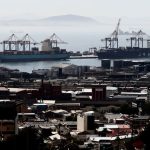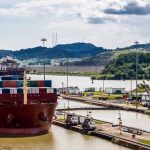Home » Asia's Dynamic Economies » The Intricacies of Financial Interconnections: Unveiling Asian Investment Dynamics
The Intricacies of Financial Interconnections: Unveiling Asian Investment Dynamics

Asia, a tapestry of diverse economies and cultures, is witnessing a profound web of investment flows, financial interconnections, and capital movements among its countries. These financial linkages, bolstered by foreign direct investment (FDI) and domestic investment, are pivotal in shaping economic ties and driving regional growth. However, the impacts of economic policies, regulations, and infrastructure on these investments remain influential factors in fostering or inhibiting their growth.
Investment Flows and Financial Linkages
Asia’s investment landscape is characterized by a blend of FDI and domestic investments, spanning various sectors and industries. FDI flows into emerging markets, particularly from developed economies, stimulating growth, technological advancements, and employment opportunities. Concurrently, domestic investments, fueled by local enterprises and governments, play a significant role in bolstering key sectors and fostering economic resilience.
Role of Foreign and Domestic Investments
Foreign direct investment catalyzes economic development, offering capital infusion, technological expertise, and market access. Multinational corporations seeking new markets and resources often drive FDI, channeling investments into sectors like manufacturing, technology, and infrastructure across Asian countries.
Domestic investments, on the other hand, drive local entrepreneurship, fuel innovation, and contribute to sustainable economic growth. Government-backed initiatives and policies to nurture local industries and SMEs are vital in mobilizing domestic capital for economic development.

Impacts of Economic Policies, Regulations, and Infrastructure
The impact of economic policies and regulatory frameworks is pivotal in influencing investment dynamics within Asia. Investor-friendly policies that promote transparency, stability, and ease of doing business attract FDI and domestic investments. Conversely, bureaucratic hurdles, inconsistent regulations, and political uncertainties can deter investments and impede economic growth.
Infrastructure development serves as a linchpin for attracting investments. Investments in transportation networks, energy systems, and digital infrastructure enhance connectivity, reduce trade barriers, and amplify the attractiveness of a region for investors.
Challenges in Investment Dynamics
Challenges persist in fully harnessing the potential of investment flows within Asia:
Regulatory Uncertainties
Inconsistent policies and regulatory complexities across countries create investor uncertainties, impacting investment decisions.
Infrastructure Gaps
Disparities in infrastructure development hinder the seamless movement of goods and capital, affecting investment attractiveness in certain regions.
Access to Finance
Limited access to financing, especially for SMEs, constrains their ability to expand, innovate, and contribute to economic growth.
About
Discover the narratives that define the global economic stage. From diplomatic dialogues to trade partnerships, our blog unveils the stories behind economic development and international relations.































